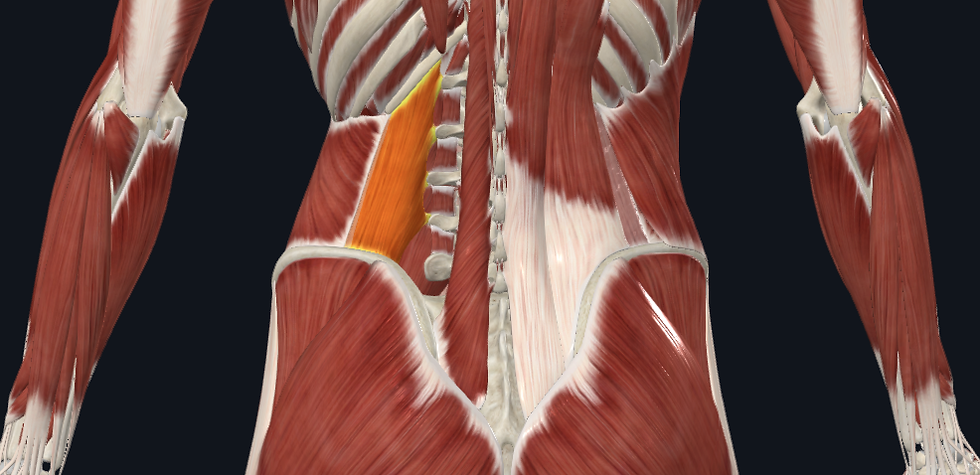Revolutionizing Massage Services: How We've Transformed Traditional Terms to Meet Client Expectations
- Kyle Conatser
- Mar 20
- 3 min read
Updated: Apr 15
In today’s fast-paced world, the search for relaxation and wellness has never been more crucial. For many, the experience begins long before the massage starts, in the language used to describe the services. Traditional terms such as "Swedish" or "Deep Tissue" can confuse clients, shaping expectations that may not align with the actual experience. At our facility, we recognize the power of clear communication and straightforward terminology in creating an enjoyable experience. That's why we have simplified our service categories into “Relaxation Massage” and “Therapeutic Massage.” This change enhances clarity and allows our skilled therapists to cater precisely to client needs, leading to improved outcomes and happier clients.
The Problem with Traditional Terminology
Walking into a massage therapy room can be daunting for many clients. Traditional terms often come with different connotations and can leave clients feeling uncertain about the treatment they might receive. For example, "Swedish" generally evokes images of light, soothing strokes, while "Deep Tissue" may insinuate intense pressure. These differing interpretations can lead to disappointment if the experience falls short of expectations.
We decided to eliminate this confusion by introducing clear, relatable descriptions. Moving away from rigid classifications and allowing clients to communicate their preferences sets the stage for trust and satisfaction.
Introducing Relaxation and Therapeutic Massage
So, how do “Relaxation Massage” and “Therapeutic Massage” differ, and what can clients expect from each?
Relaxation Massage
A Relaxation Massage is tailored for clients seeking overall stress relief. It employs gentle strokes designed to create a calming ambiance and foster a serene state of mind. For instance, if a client arrives with high levels of stress from work, they may find that the Relaxation Massage lowers their heart rate by up to 20%, helping them feel more centered and composed.
During this session, clients can voice specific areas needing focus, be it the neck or the lower back. Therapists adapt their techniques accordingly, promoting relaxation and comfort throughout the experience.
Therapeutic Massage
In contrast, Therapeutic Massage targets specific physical concerns like muscle soreness, tension from injuries, or chronic pain. Therapists use a variety of methods tailored to the client's unique needs. For example, if a client suffers from lower back pain, a targeted Therapeutic Massage may incorporate deep tissue techniques that help reduce pain by as much as 30% after just one session.
This approach allows clients to communicate their issues freely, without restrictions based on traditional methods. The therapist can adapt the session dynamically, ensuring it aligns with the client’s needs.
Enhancing Communication: A Core Focus
A key aspect of our new service model is the emphasis on communication between the client and the therapist. Using straightforward terms allows clients to express their expectations more easily.
For example, a client arriving for a session can simply share they want either relaxation or therapeutic support. This straightforward dialogue shifts the focus from rigid labels to individual needs.
Therapists can quickly understand what the client hopes to gain, leading to better-aligned techniques from the start.

What Clients Can Anticipate
Clients can expect an intuitive and client-centered process when they choose our services.
Consultation: Your therapist will assess your intake forms and ask about your preferences for relaxation or therapeutic relief to develop a customized treatment plan.
Customized Experience: Based on this information, therapists adapt their methods to craft a tailored experience. They adjust pressure and target specific knots, ensuring the session meets individual expectations.
Continuous Dialogue: A commitment to open communication throughout the session allows the therapist to remain attuned to the client's comfort and evolving needs.
This approach empowers clients, making them active participants in their wellness journey.
The Benefits of This Approach
By focusing on simple terminology and improved communication, both therapists and clients can reap numerous benefits:
Reduced Anxiety: Clients arrive feeling reassured about what to expect, which significantly lowers pre-session nerves.
Tailored Treatments: The flexibility for therapists to adjust techniques based on client feedback leads to more relevant services.
Enhanced Outcomes: Clear communication and customization can lead to better physical results, as therapists can address specific client needs effectively.
A New Perspective on Massage Therapy
The shift from traditional terms to flexible service categories represents a major step forward in enhancing client experiences. Our offerings of "Relaxation Massage" and "Therapeutic Massage" seamlessly align with client expectations, creating an environment of trust and open dialogue.
This innovative approach also allows therapists to draw on their extensive training and skills to give individualized care. The future of massage therapy lies in deepening our understanding of our clients. By adopting this new model, we pave the way for greater satisfaction and improved well-being.







Comments